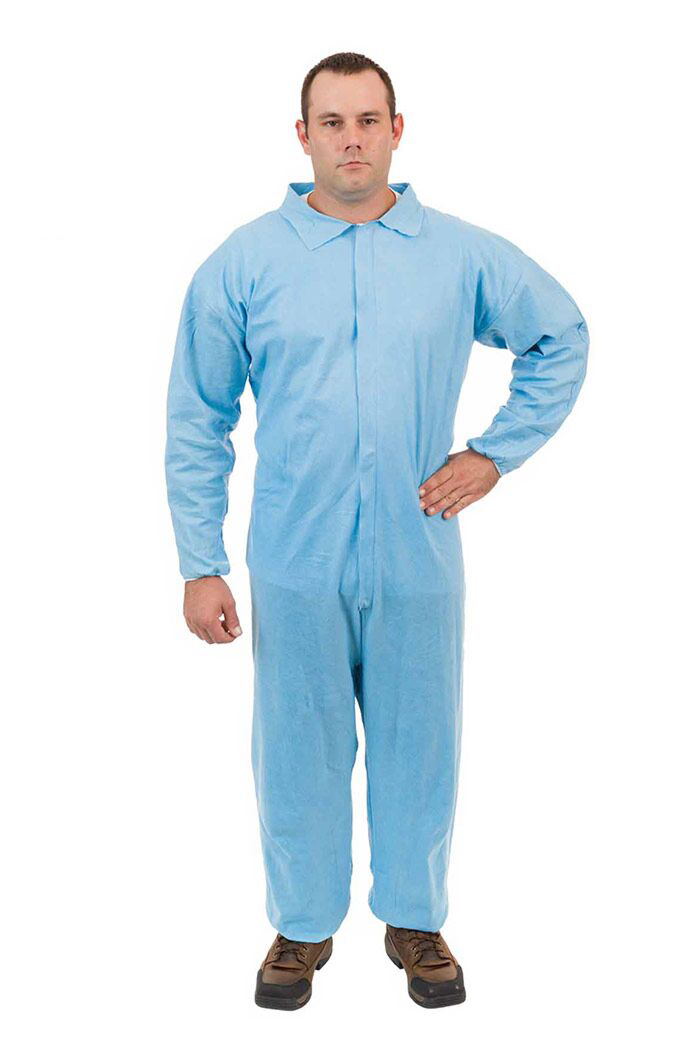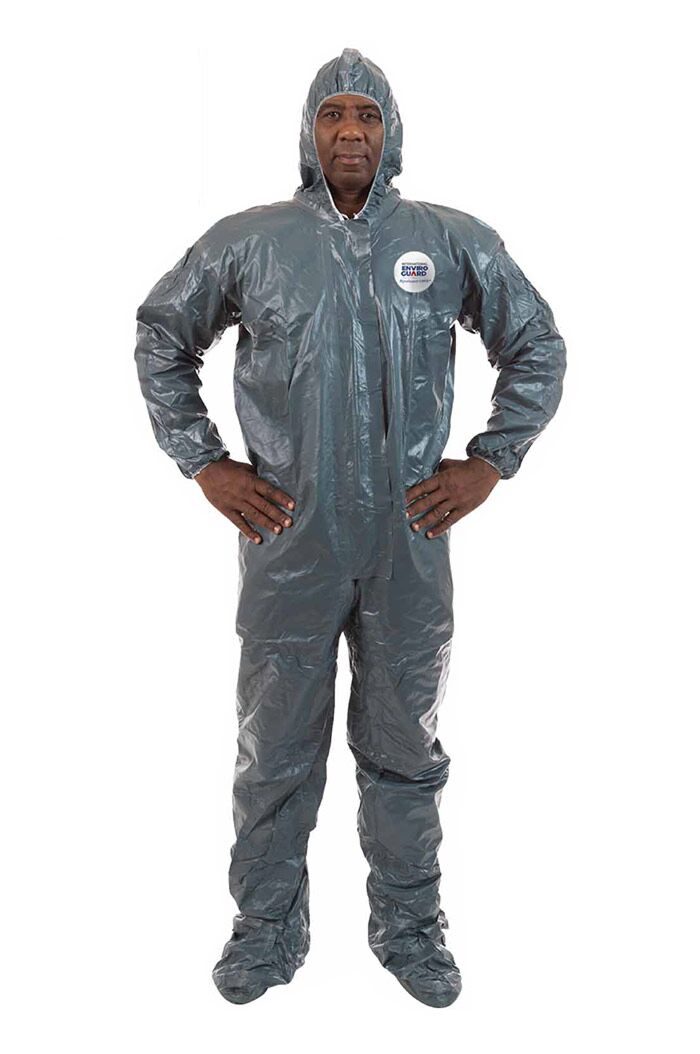We use cookies to make your experience better. To comply with the new e-Privacy directive, we need to ask for your consent to set the cookies. Learn more.
Disposable fire protective clothing for flames and sparks
To protect your workforce from sparks, flames, and flash fires you invest in primary fire-retardant (FR) apparel to keep them safe. Our single-use fire-resistant coveralls protect your primary FR by keeping it clean and reducing wear and tear. Additionally, they provide an extra layer of defense against sparks, flames, molten drips, and liquids.
Not all flame-resistant workwear is equal.
Our flame-resistant clothing undergoes stringent testing for enhanced chemical and flash fire safety. Secondary FR clothing meets the ASTM D6413 standard for Vertical Flammability. This standard specifically tests the vertical flame resistance of secondary single-use flame-resistant clothing.
The importance of ASTM D6413
This standard considers three important factors: after-flame time, char length, and melting or dripping of the clothing. Per ASTM D6413, all materials used in the protective clothing should have a char length of 7 inches or less and an after-flame duration of 2 seconds or less. After-flame refers to when a material continues to burn after removing the ignition source. After-flame time is how long a material continues to burn after removing the ignition source.
These factors are important because workers have limited time to remove protective clothing if it catches fire. If clothing continues to burn when a worker moves away from the source of the fire, it can spread flames to other areas. More importantly, the worker may suffer greater bodily harm.
Char length is the distance from the fabric edge exposed to the flame to the farthest point of visible fabric damage. The longer the damage (char length), the more the flame spreads to other areas of the coverall. Similarly, melting or dripping of the coverall can cause added bodily harm.
PyroGuard FR® coveralls have less than 6 inches of char damage and less than 2 seconds of after-flame duration. In situations where every second counts as “escape time”, your team can rely on PyroGuard protective clothing to ensure their safety.
Static Electricity: Why BS EN 1149-5 matters for flame-resistant workwear
In industrial environments, any buildup of static electricity can be very dangerous. If charges build to unsafe levels, it can lead to a spark. This creates a high risk of fire or explosion around flammable chemicals or dust commonly found in industrial environments. Other spark hazards in these environments include fuel, pressurized equipment, flammable paints, oils, grease, and even humidity.
PyroGuard protective clothing meets the BS EN 1149-5 requirements for Electrostatic Discharge (ESD) protection, including static dissipation and surface resistance. Therefore, clothing is safe to use in ESD-sensitive applications and areas with a risk of explosion.
Possible applications for secondary flame-resistant coveralls
The following applications often involve processes, materials, and/or handling of flammable or combustible materials. Certain paints, grease, oils, dust, and chemicals are flammable and should require wearing flame-resistant clothing.
Chemical processing;
Hazardous materials remediation;
Pharmaceuticals operations;
Paint spraying;
Tank cleaning;
Laboratory operations;
Bulk chemical transfer/handling operations;
General manufacturing;
General maintenance;
Clean-up operations;
Industrial turnarounds;
Oil and gas manufacturing;
Petrochemical applications
Protect primary fire safety clothes, maintain comfort, and reduce risk
PyroGuard disposable coveralls are durable, reducing replacements and saving money in the long run. These coveralls have a light fabric weight and allow heat and moisture to escape, so workers can stay cool in hot environments.
Our long-lasting, flame-resistant clothing helps prolong the lifespan of your primary fireproof attire. PyroGuard FR® and PyroGuard CRFR™ are effective against dirt, grease, grime, and numerous chemicals.
View our full line of PyroGuard FR® and PyroGuard CRFR™ fire retardant coveralls:

